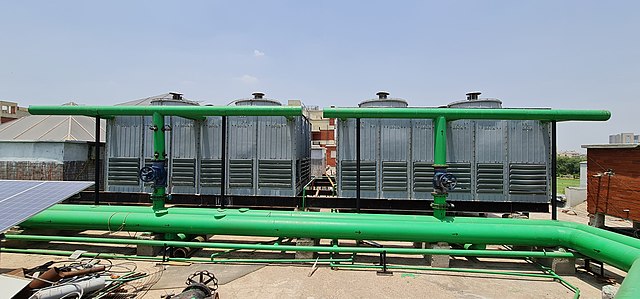An HVAC Contactor is a key electrical component of an industrial HVAC (Heating, Ventilation, and Air Conditioning) system that controls the flow of electrical power to various components, particularly the AC Unit compressor and condenser fan motor. It plays an important part in the operation of the system.
In an industrial HVAC system, the primary purpose of a contactor is to handle the high-voltage electrical current that passes to the AC compressor and condenser fan motor. It works as an electrical switch, allowing or disallowing electricity to various components. This post will review how to replace an HVAC contactor. To learn how electrical contactors work, see How to Wire Electrical Contactors.
Need HVAC Contactors?
Get HVAC Contactor QuoteSell To Us
Got Electrical Equipment You Don't Need?

Reduce Your Electrical Inventories & Earn Cash
Sell My EquipmentPanelboard
Need a Panelboard for Your Project/Job?

Our Experienced Sales Engineers Can Help Design the Right Panelboard For You
Learn MoreTransformer Oil Testing
Is Your Transformer Due For Servicing?

Get Your Oil Analysis & Fluid Testing Done By Our NETA-Certified Techs
Learn MoreElectrical Product Resources
Product Training Product Safety Product Guides Product News Featured ProductsHow to Tell if an Electrical Contactor is Bad
A faulty air conditioner AC compressor or condenser contactor could reduce the effectiveness of your AC system. Here are some common indications of a faulty AC contactor:
Inconsistent Cooling or Heating: If your HVAC system isn’t consistently delivering the proper temperature, the contactor could be to blame. A faulty contactor can prevent the compressor from starting or cause it to run constantly.
AC Unit Doesn’t Start: If your air conditioner fails to start when it should, it could be due to a defective contactor. Because the contactor is in charge of sending electricity to the compressor and condenser fan motor, a faulty contactor can prevent the system from starting.
Humming Sound: When you turn on the HVAC system, if you hear a humming sound from the outdoor unit but the fan and compressor do not start, it could be caused by a defective contactor. The buzzing sounds indicate that the contactor coil is active, but the contacts may not be closing properly.
Clicking Sound: You can sometimes hear a quick clicking sound emanating from the contactor. This could mean that the contacts are chattering, which could be caused by a faulty or worn contactor.
Burn Marks or Pitting: Check the contactor visually for signs of wear or damage. If you notice burn marks or pitting on the contact points, it’s a sure sign that the contactor is deteriorating and has to be replaced.
Overheating: A hot or overheated contactor indicates a problem. During operation, the contacts should not become very hot. If they do, contactor failure may result.
Failure to disengage: When the thermostat is satisfied, a faulty contactor may fail to disengage, causing the HVAC to run constantly.
Inconsistent Fan Operation: A failing contactor might cause the condenser fan motor to stop or run irregularly. The contactor supplies power to the fan motor, and a malfunction can cause it to stop working.
Physical Damage: Examine the contactor for visible damage. Physical damage, corrosion, or signs of wear are all indications that the contactor needs to be replaced.
Circuit Breaker Tripping: A faulty contactor could draw too much current, causing circuit breakers to trip frequently. If your air conditioning system is causing breakers to trip, you should look at the contactor.
If you feel your AC contactor is faulty based on these symptoms, you should have an HVAC expert troubleshoot and replace the contactor.
Steps for Replacing Central AC Contactors

Before attempting any maintenance or repairs and looking into how to replace an HVAC contactor, make sure the system’s power is turned off, and check the system’s documentation and a professional technician for precise instructions. The general steps for replacing an HVAC Contactor are as follows:
Materials and Tools You’ll Need:
Replacement contactor
Screwdrivers
Wire strippers
Wire nuts or connectors
Multimeter
Electrical gloves
Safety glasses
10 Steps to Replace a Contactor in an Industrial HVAC System
Wear appropriate personal protective equipment, including electrical gloves and safety glasses.
- Locate the Contactor: Find the contactor in the HVAC system. It’s usually found in the control panel or electrical compartment.
- Label and Document Wires: Take clear pictures or make detailed notes of the existing wiring connections to ensure you can reconnect them correctly.
- Remove the Old Contactor: Unscrew or unclip the old contactor from its mounting location.
- Carefully disconnect the wires from the old contactor. Make sure there is no power flowing through the system at this point. Pay attention to the terminal markings on the contactor to understand which wire goes where.
- Install the New Contactor: Mount the new contactor in the same location as the old one. Connect the wires to the new contactor terminals, following the notes or pictures you took earlier.
- Ensure the connections are tight and secure. Check for Loose or Damaged Wires. Inspect all other wires and connections in the control panel to make sure they are in good condition.
- How to Test AC Contactor: Turn the power back on to the HVAC system. Use a multimeter to check for voltage at the contactor coil terminals. The coil should be energized.
- Check for connection through the main contacts (this should only be closed when the contactor coil is energized) to ensure that the contactor is working properly.
- Check that the system performs as intended, especially whether the contactor engages when the thermostat calls for heating or cooling.
- Secure and Close: Once you’ve confirmed the replacement is successful, secure the panel or cover on the HVAC system. Dispose of the old contactor properly.
In order to avoid future problems, examine and maintain your HVAC system on a regular basis. Checking for loose connections, cleaning coils, and changing air filters are all part of the process.
3 Types of Central HVAC Contactors
Contactors for industrial central HVAC systems are typically built to manage the high electrical loads and demands of these large-scale systems. Three common types are listed below. There are more types, and the one required depends on your application.
Magnetic contactors: Frequently used in industrial HVAC systems, they have a coil that, when powered, creates a magnetic field that attracts the contacts, causing the circuit to be closed. They are dependable and long-lasting, making them ideal for heavy-duty applications.
Definite Purpose Contactors: These contactors have been designed specifically for HVAC applications and come in a variety of configurations to meet the needs of various system components. They are commonly used to regulate compressors, condenser fan motors, and other high-current HVAC equipment.
Three-Pole and Four-Pole Contactors: Central HVAC systems may use three-pole or four-pole contactors. Three-pole contactors are typically used in single-phase systems and components, whereas four-pole contactors are commonly utilized in three-phase systems. The number of poles simply refers to the number of electrical circuits involved.

Contactors’ Role in HVAC Compressors and Condensers
The contactor is a critical electrical component in industrial HVAC systems, managing the distribution of power to major components such as the compressor and condenser fan motor. Its importance to the overall functionality of the system cannot be understated.
The basic function of the contactor when it comes to industrial HVAC is to manage the transmission of high-voltage electrical current that energizes the compressor and condenser fan motor. It acts as an electrical switch, regulating the supply of electricity to various system components and guaranteeing an air-conditioned environment for equipment and people. At Relectric, we supply electrical contactors and other electrical parts to help you with your projects. We’re here to help! 800.497.6255
